![The Mohican Board! [Bumppo's Redux!] The Mohican Board! [Bumppo's Redux!]](images/wwwboard.gif) |
|
| Author |
 Topic Topic  |
|
|
James N.
Colonial Militia
   

USA

Bumppo's Patron since [at least]:
October 24 2007
Status: offline
|
 Posted - November 15 2014 : 12:47:53 PM Posted - November 15 2014 : 12:47:53 PM



|
Image Insert:
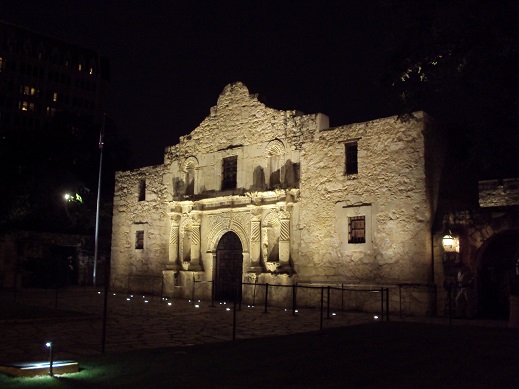
79.71 KB
The most famous of the Spanish missions at San Antonio, Texas, is also the oldest, Mission San Antonio de Valereo, commonly known as the Alamo. Founded in 1718 on the banks of the San Antonio River, it stood alone until it was joined by the nearby presido ( Spanish fort ) and town later known collectively as San Antonio de Bexar. The Spanish missions are best remembered for their church or chapel buildings like that above at the Alamo, but were originally large establishments, often covering several acres containing conventos or homes for the priests; jacales or huts and later stone structures to house native families; and storehouses, workshops, and corrals necessary for everyday life in a settlement.
Originally, mission was used to describe the purpose of the settlements to establish friendly relations with the native peoples and spread the gospel of Catholic Christianity among them, but soon the word described the compounds themselves. Usually they took the form of a regular fort with wooden or stone walls to encourage those inside to remain and to keep hostiles out. The native Americans or los Indios who were the clients of the missions had originally been relatively peaceful groups of semi-sedentary hunter-gatherers who had recently been devastated by smallpox and other diseases of European origin and were being preyed upon by their more mobile neighbors like the Comanche and Lipan Apaches and so welcomed the security and protection afforded by the Spanish. Though they were from distinctly different bands or tribal groups, they shared similar languages and were referred to by the Spanish collectively as Cohiulatechans.
Eventually there were five such mission settlements within a few miles of San Antonio; four of them are now included in San Antonio Missions National Historical Park, administered jointly by the National Park Service and the Catholic Church, which continues to hold services in each of the original church or chapel buildings at each site. Since the Alamo is not included and is best remembered for its service as a fort in the Texas Revolution of 1836, having its own dedicated thread in the forum it will not be included here; posts about the remaining four will soon follow.
|
|
report to moderator
|
|
|
James N.
Colonial Militia
   

USA

Bumppo's Patron since [at least]:
October 24 2007
Status: offline
|
 Posted - October 12 2018 : 11:57:07 AM Posted - October 12 2018 : 11:57:07 AM




|
I had aborted posting on this thread, not because I didn't WANT to, but because of my trouble with the mechanics of this site! Fortunately, they have been addressed to a great extent, making it again possible to navigate, thanks to Rich.
Mission Nuestra Señora de la Purísima Concepción de Acuña (Concepcion)
Image Insert:
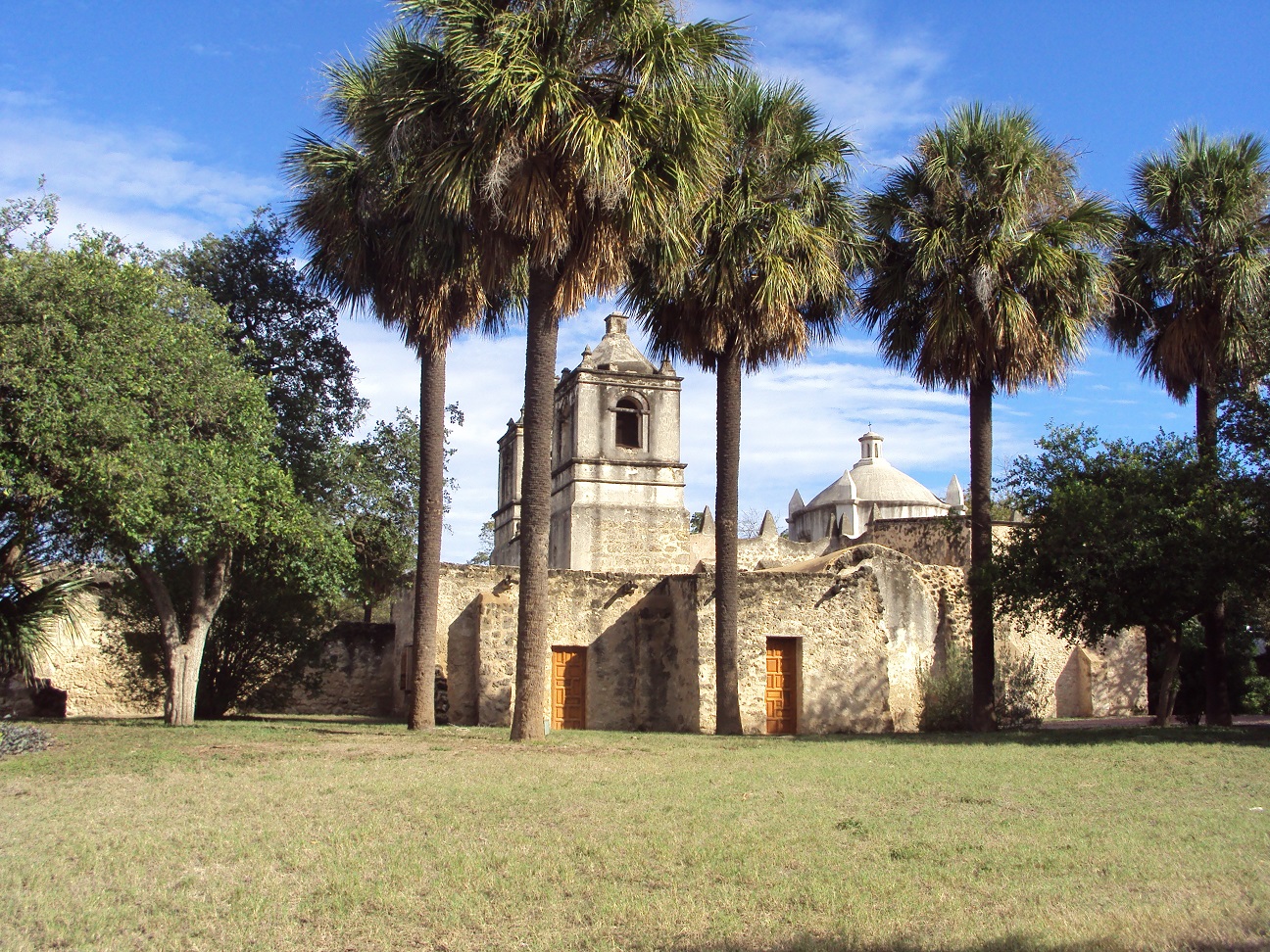
771.89 KB
This is my favorite of the five San Antonio missions, largely because it retains a bit of its original eighteenth century paint and hasn't been overly restored like some of the others. As a mission it was founded by Franciscan priests in 1716 and moved to its present site in 1731. According to the NPS website, "This handsome stone church took about 15 years to build, and was dedicated in 1755. It appears very much as it did over two centuries ago. Due to the fact that it was built directly on bedrock, it never lost its roof, or its integrity. It remains the least restored of the colonial structures within the Park."
Image Insert:
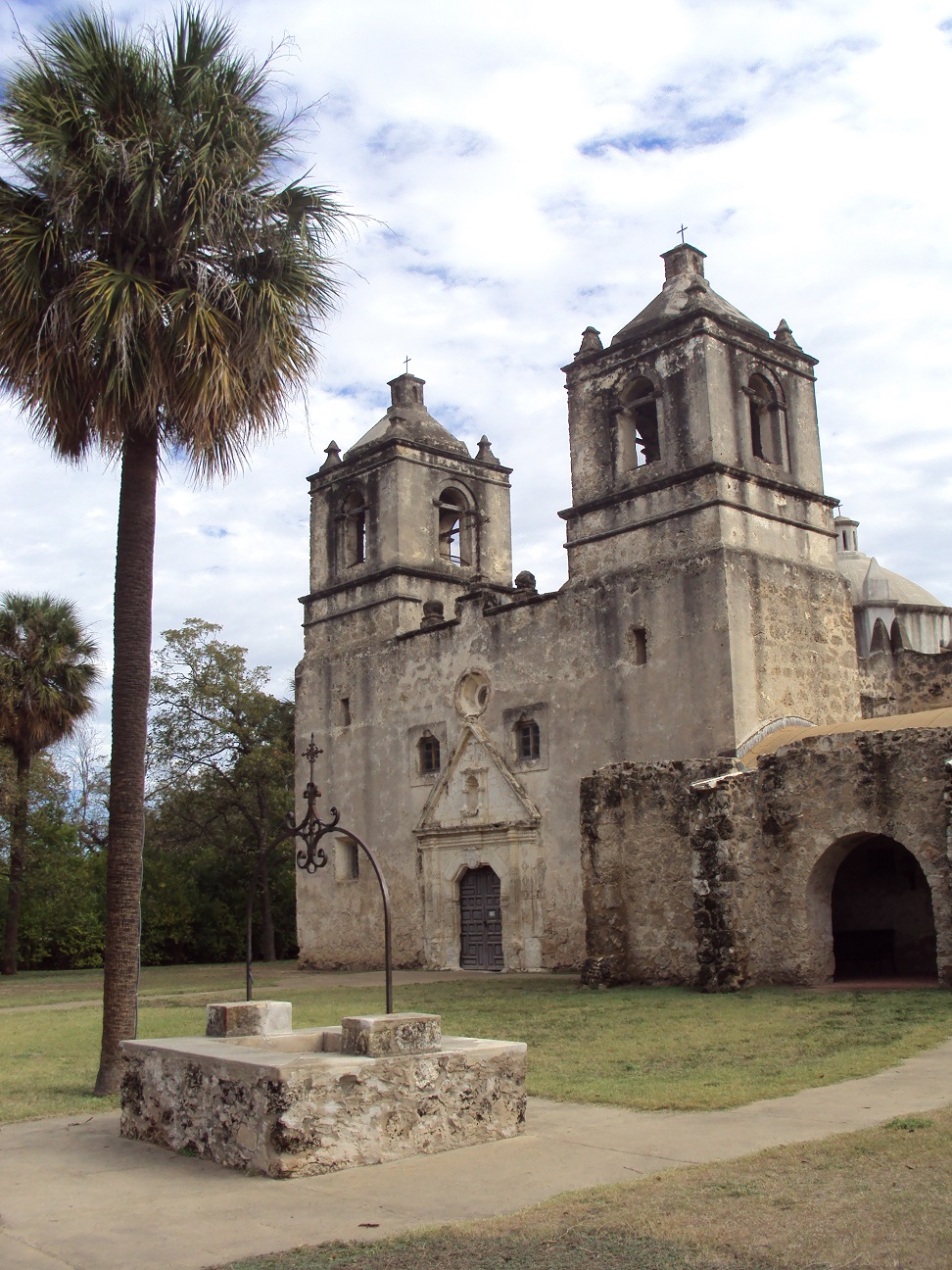
530.81 KB
Originally the entire exterior was covered with gaudy blue and orange geometric designs applied over the stone or whitewashed plaster. Below, what may be the original (or at least very old) doors lead into the sanctuary.
Image Insert:
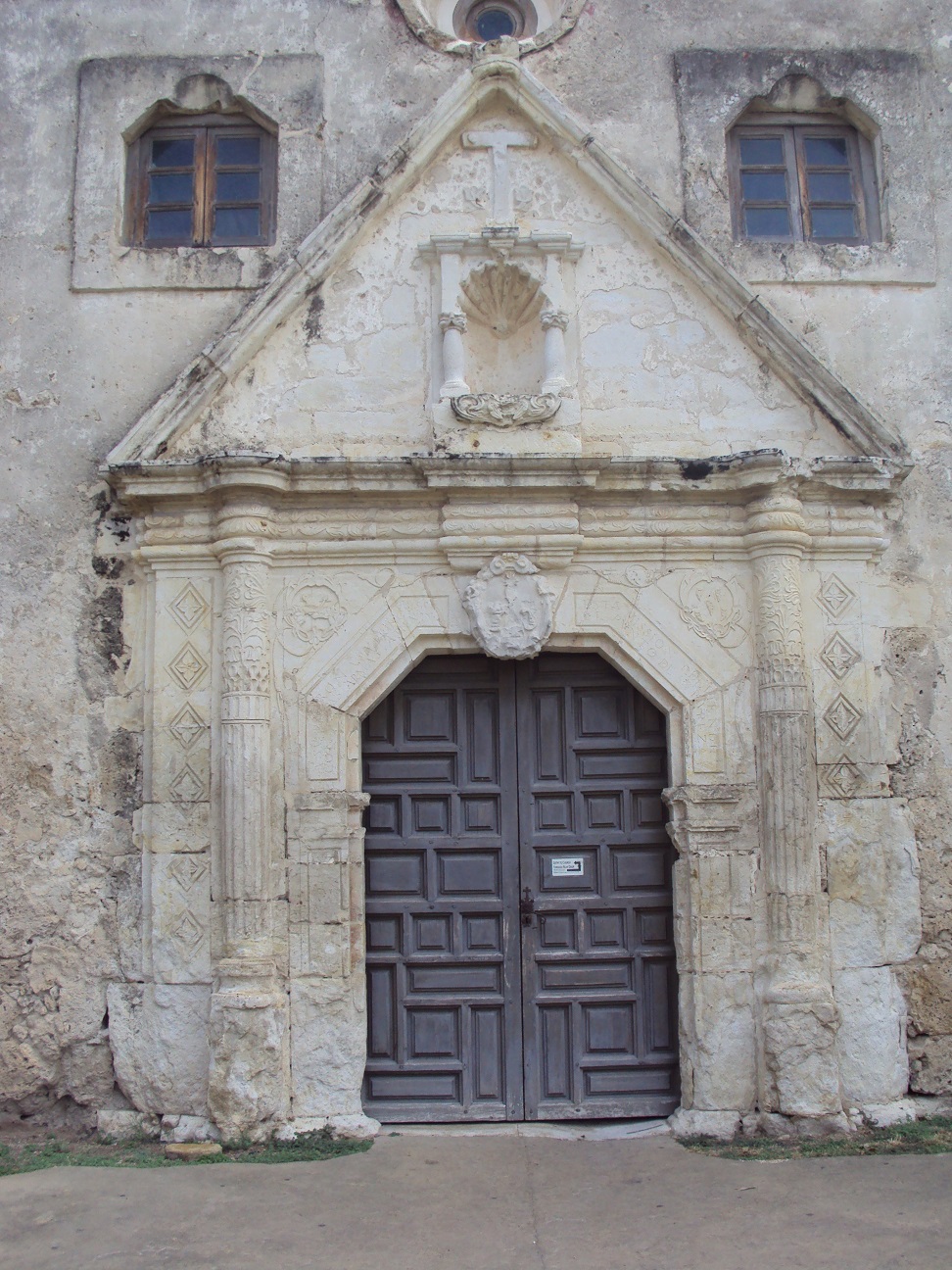
542.32 KB
Image Insert:
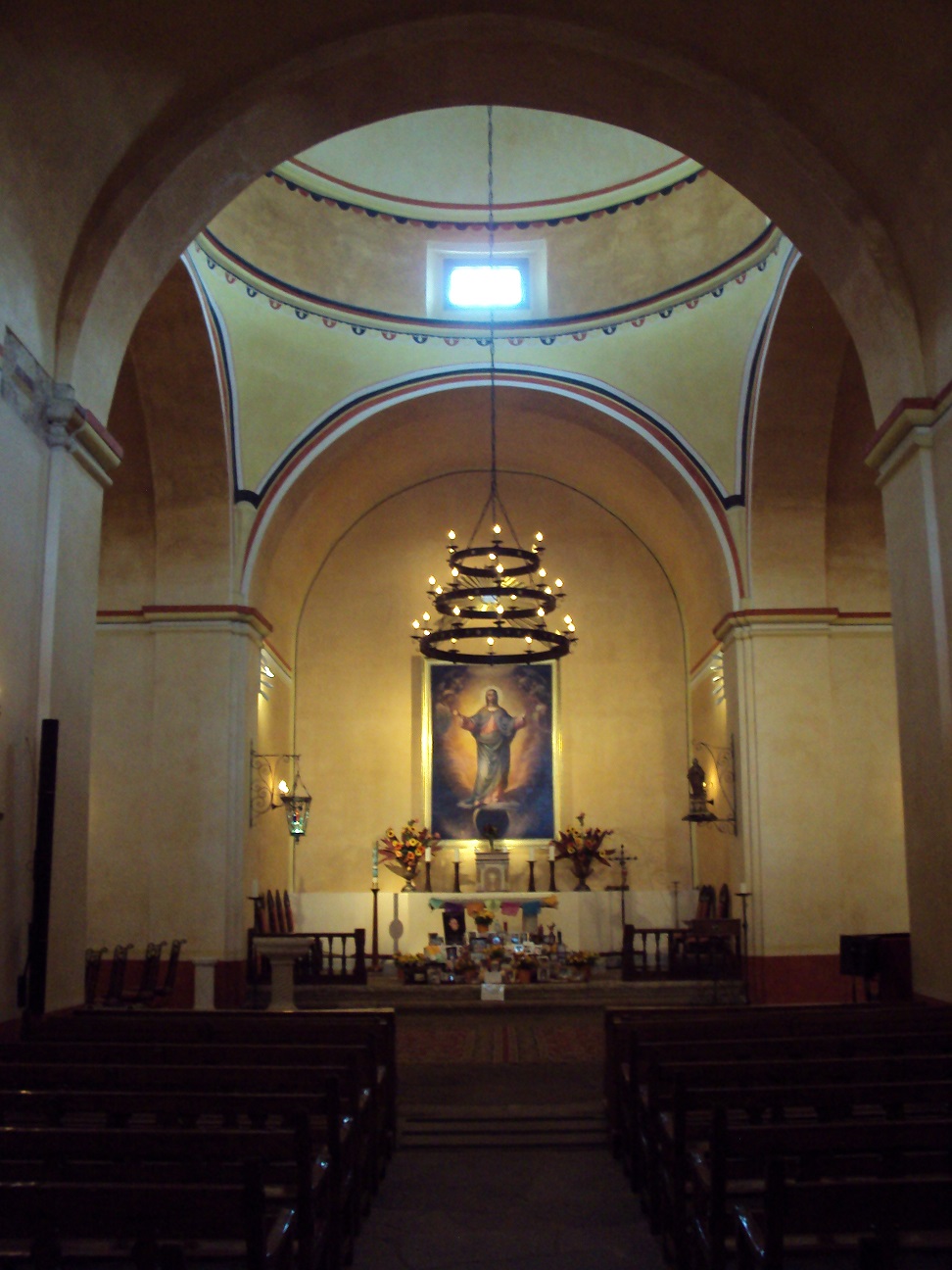
316.73 KB
The sanctuary retains its character because this, like the others, is still an active Catholic church.
Image Insert:
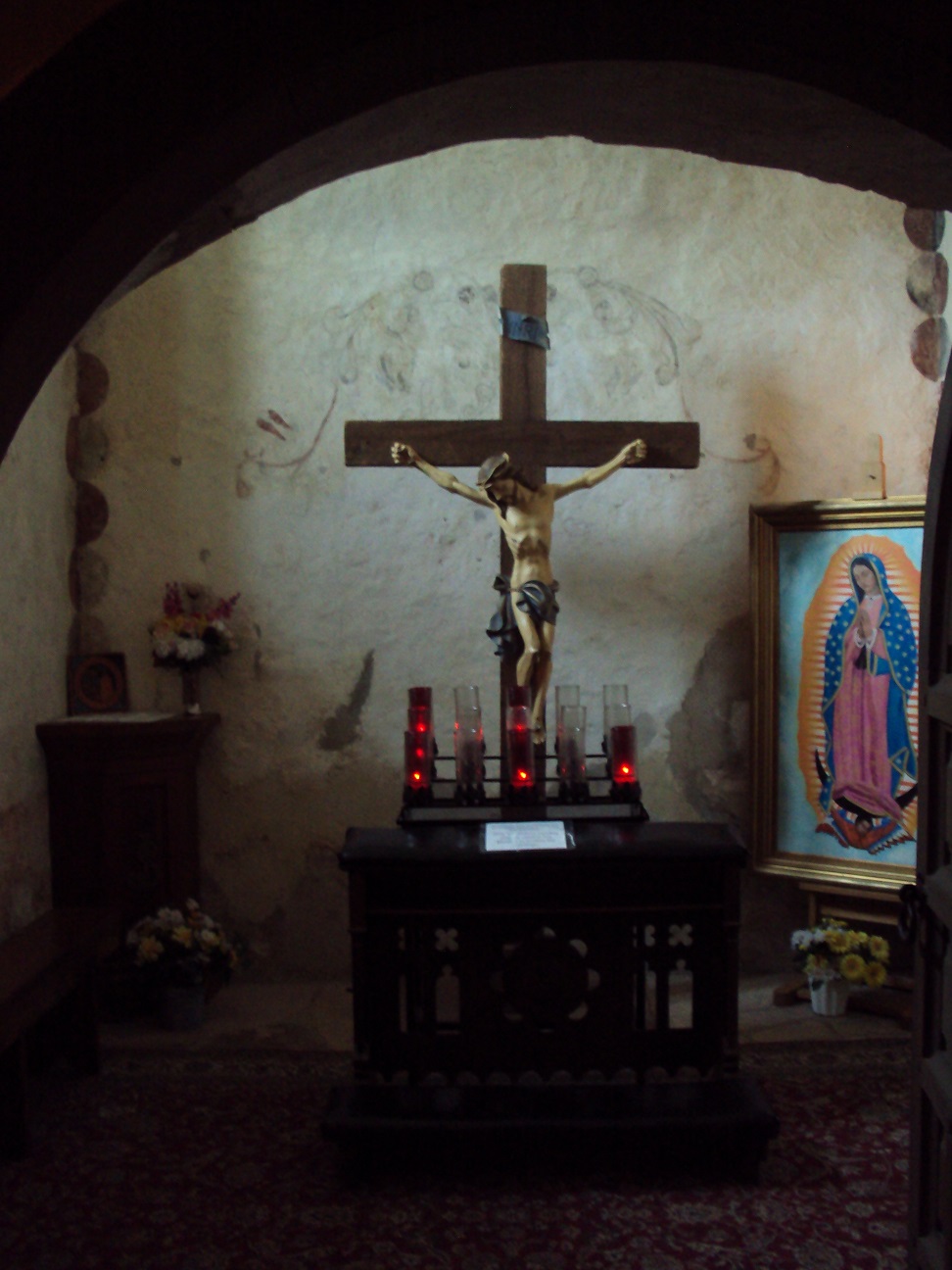
277.97 KB
Image Insert:

332.2 KB
Other architectural details include interesting smaller interiors above and covered archways like that below.
Image Insert:
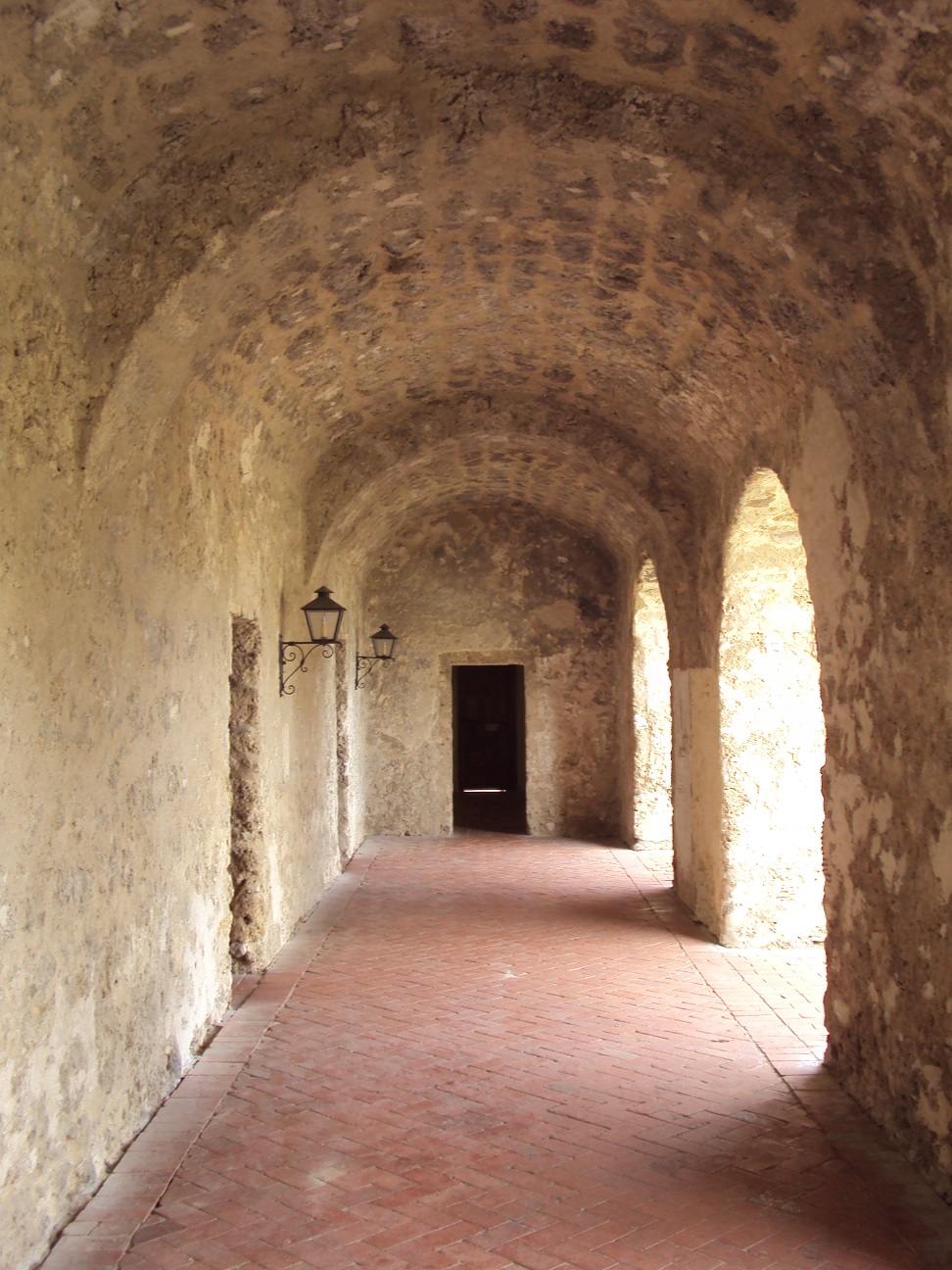
446.15 KB
Image Insert:

339.49 KB
Of course the details of the original painted decorations have survived best in out-of-the-way places in the interior rooms like above and below.
Image Insert:
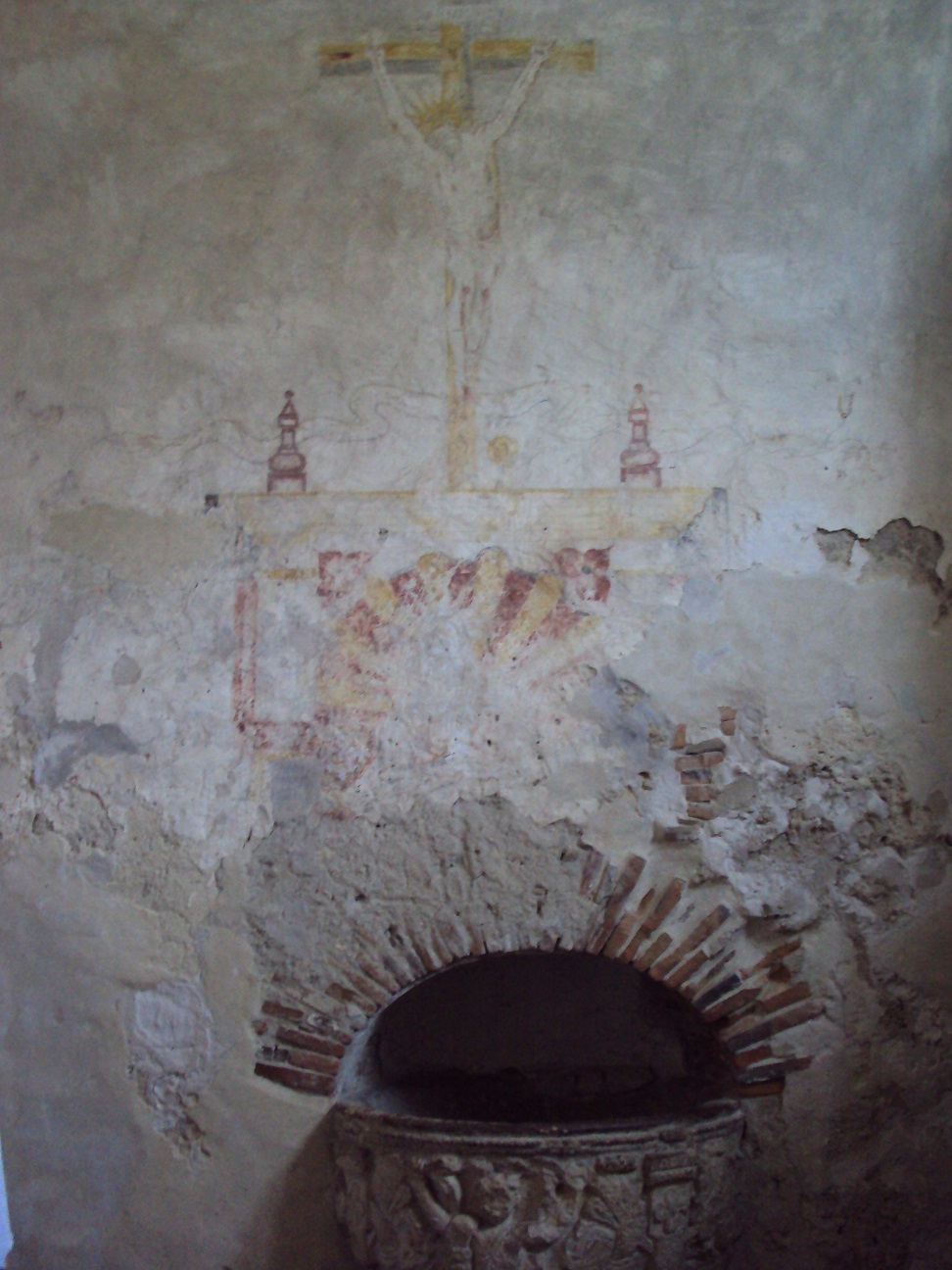
337.25 KB
Until preservation work in 1988 revealed a second eye, this fresco below on the convento ceiling was known as the "Eye of God".
Image Insert:
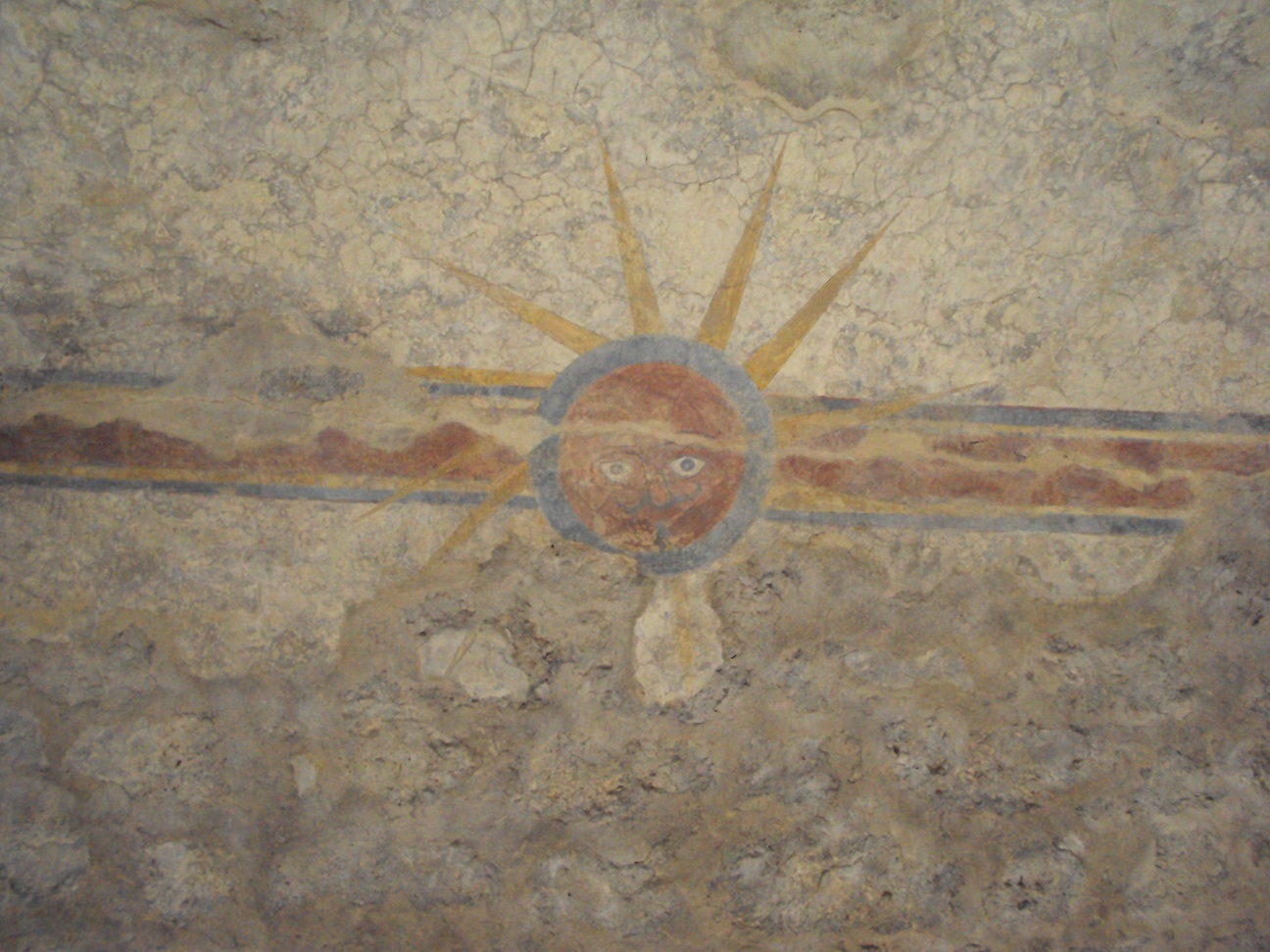
380.62 KB
It doesn't hurt the appeal of the mission that it was the scene of a small battle during the Texas Revolution between Texican Anglo settlers led by James "Jim" Bowie and Mexican troops led by General Martin Perfecto de Cos (brother-in-law of Mexican dictator Santa Anna) in December, 1835 only a few months prior to the battle at the Alamo the following March. The fighting took place between the mission and the nearby river which it faced.
Image Insert:
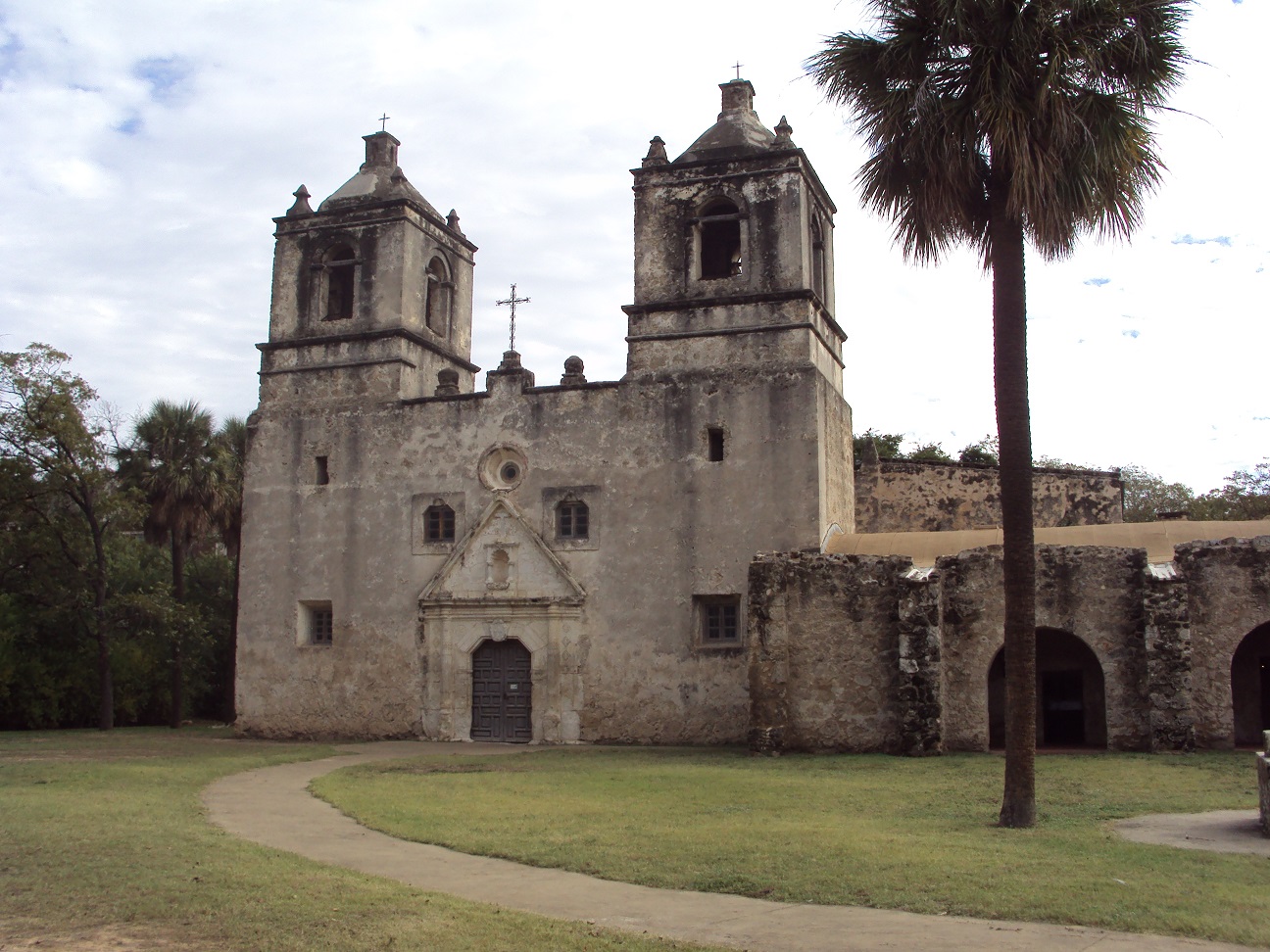
442.95 KB
|
report to moderator  |
|
|
Monadnock Hiker
Colonial Militia
   
Bumppo's Patron since [at least]:
August 31 2017
Status: offline
|
 Posted - October 12 2018 : 5:10:53 PM Posted - October 12 2018 : 5:10:53 PM



|
| Great pics & info as always James - thx. - The architecture & woodwork involved is unbelievable, especially considering the location. Moving that much stone in that time period using what was available to work with is hard to imagine. Fifteen years is a long time - but considering the location & the weight of what was being moved - understandable. The doors are a true work of art. |
report to moderator  |
|
|
James N.
Colonial Militia
   

USA

Bumppo's Patron since [at least]:
October 24 2007
Status: offline
|
 Posted - October 13 2018 : 11:35:04 AM Posted - October 13 2018 : 11:35:04 AM




|
Mission San José y San Miguel de Aguayo
Image Insert:
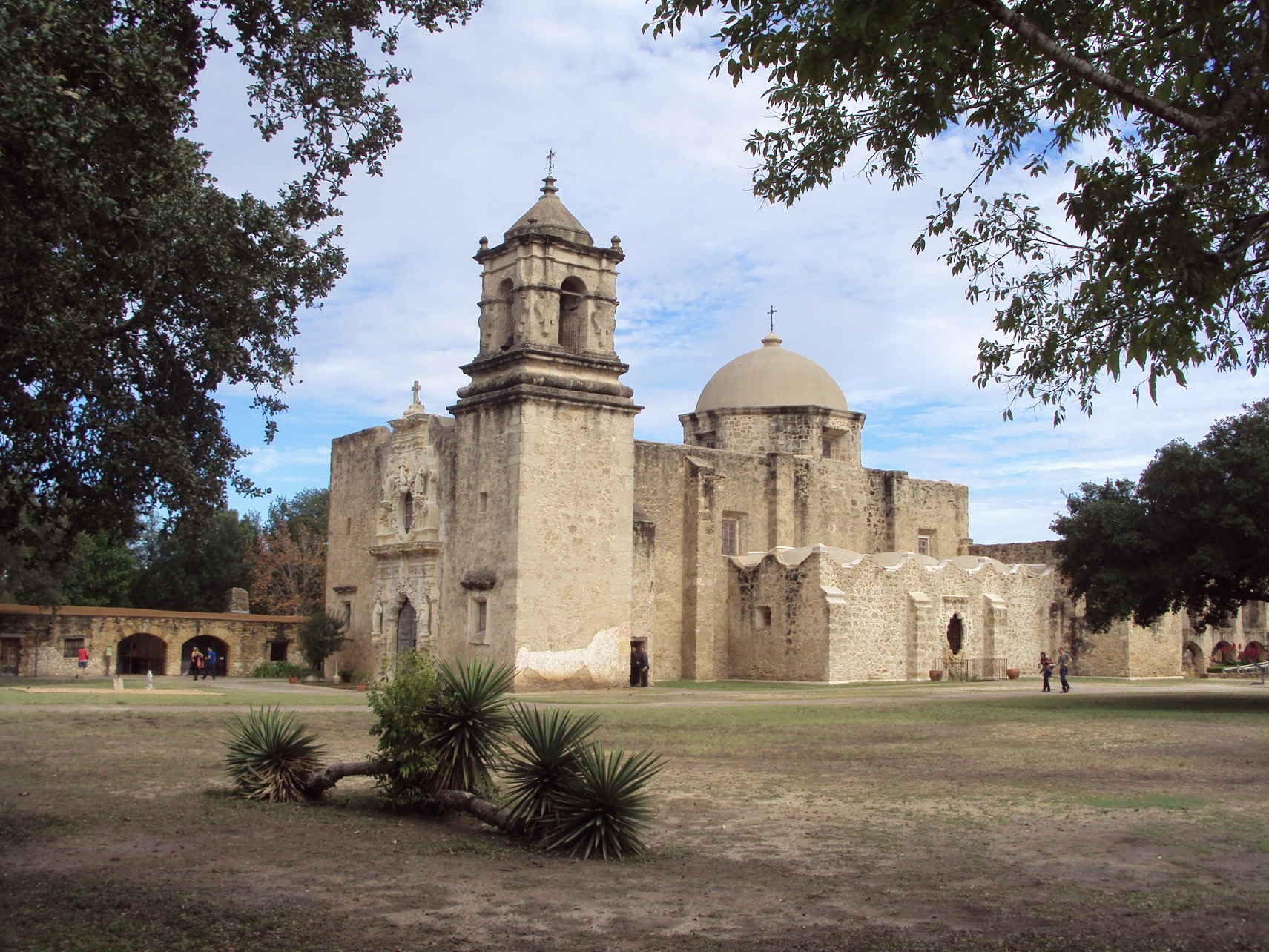
963.31 KB
If Concepcion is the least-restored of the mission churches, then the better-known San Jose is probably the most. The next in the chain of missions stretching south from San Antonio along the Rio San Antonio, San Jose was founded in 1720 to replace the unfinished Alamo. San Jose remained in good condition and became the first of the missions here to become a unit of the National Park Service in 1941 after undergoing complete restoration of the church and grounds in the 1930's by the Civilian Conservation Corps (CCC).
Image Insert:
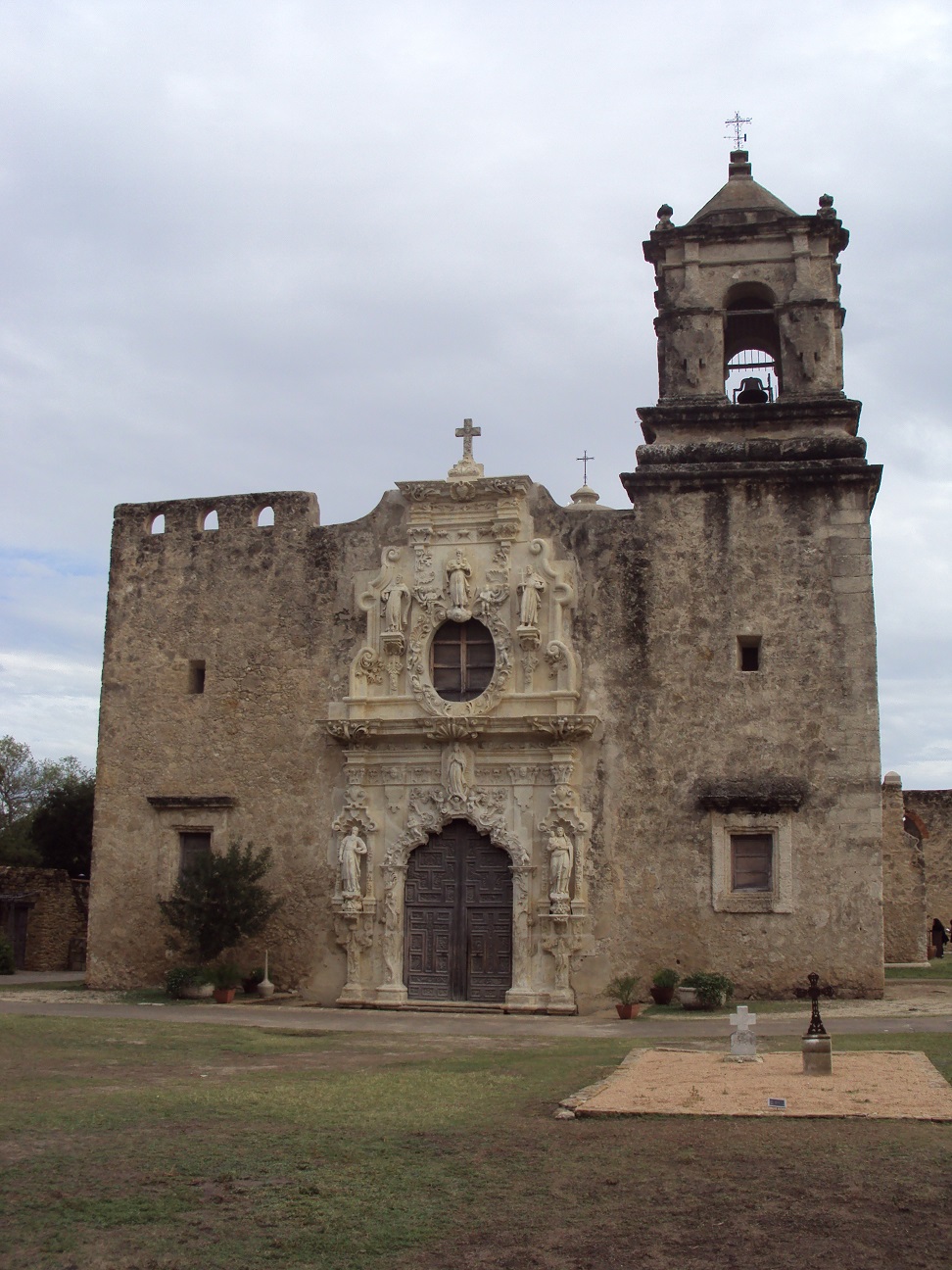
427.9 KB
The façade above was likely originally intended to have twin bell towers; below, the doors again leading into the sanctuary.
Image Insert:
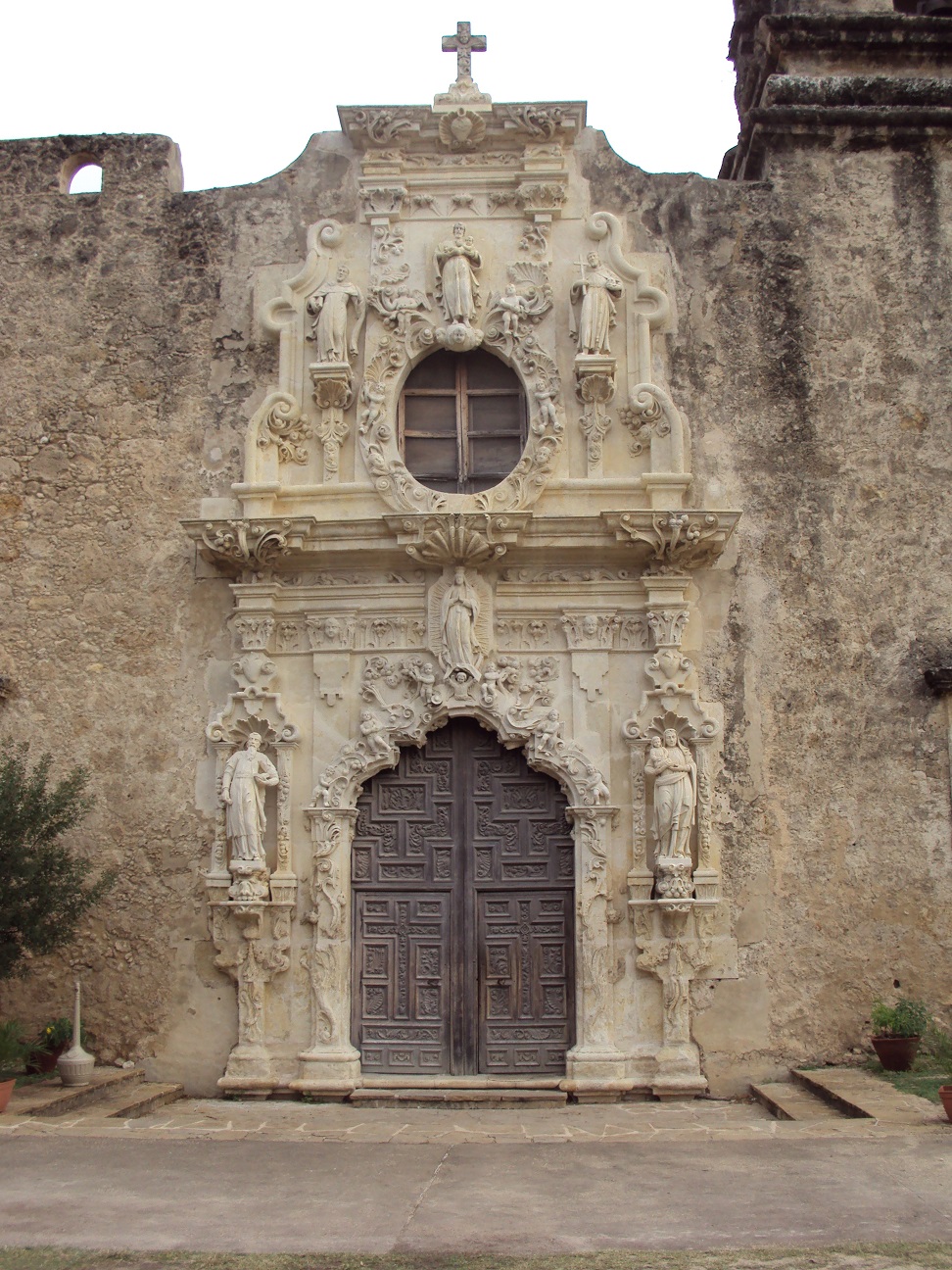
565.31 KB
Image Insert:
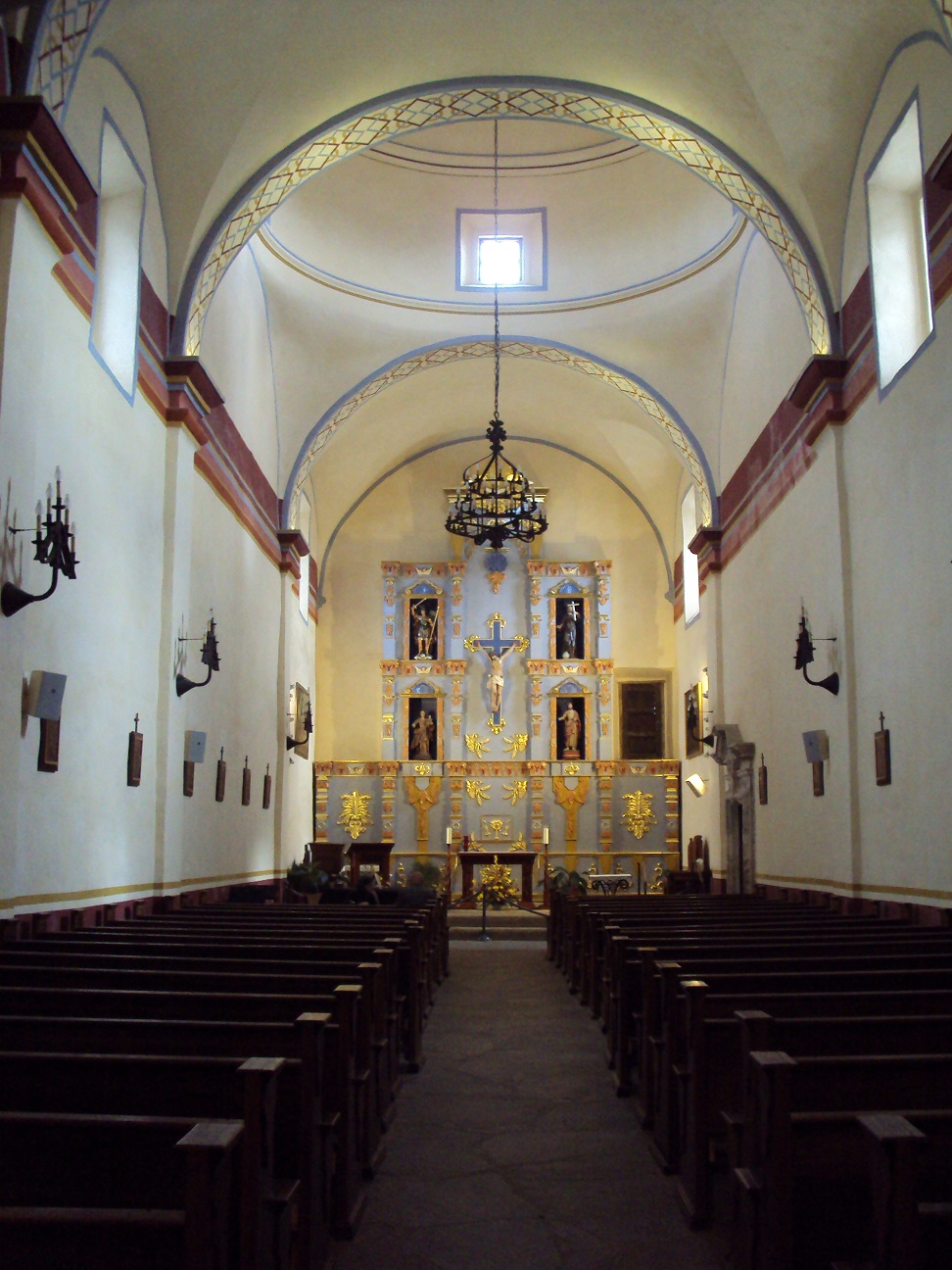
390.94 KB
"San José, as it became known, was the largest of the missions in the area. At its height, the community contained about 350 Indian neophytes, sustained by extensive fields and herds of livestock. Viewed as the model among the Texas missions, San José gained a reputation as a major social and cultural center. It became known as the "Queen of the Missions." Its imposing complex of stone walls, bastions, granary, and magnificent church was completed by 1782."
Image Insert:
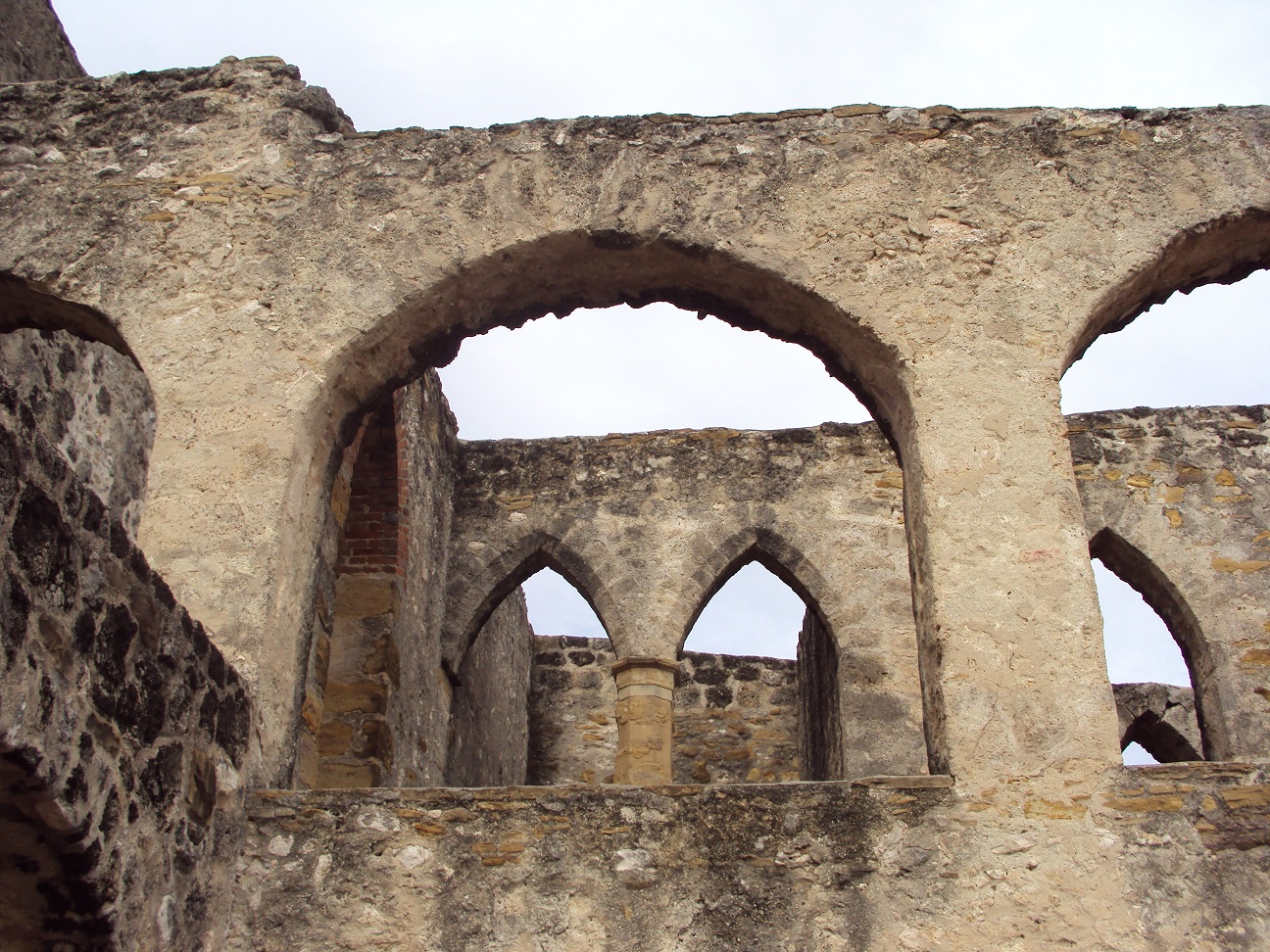
641.72 KB
The walls are supported by arches that perform functions similar to flying buttresses in European cathedrals of the era.
Image Insert:
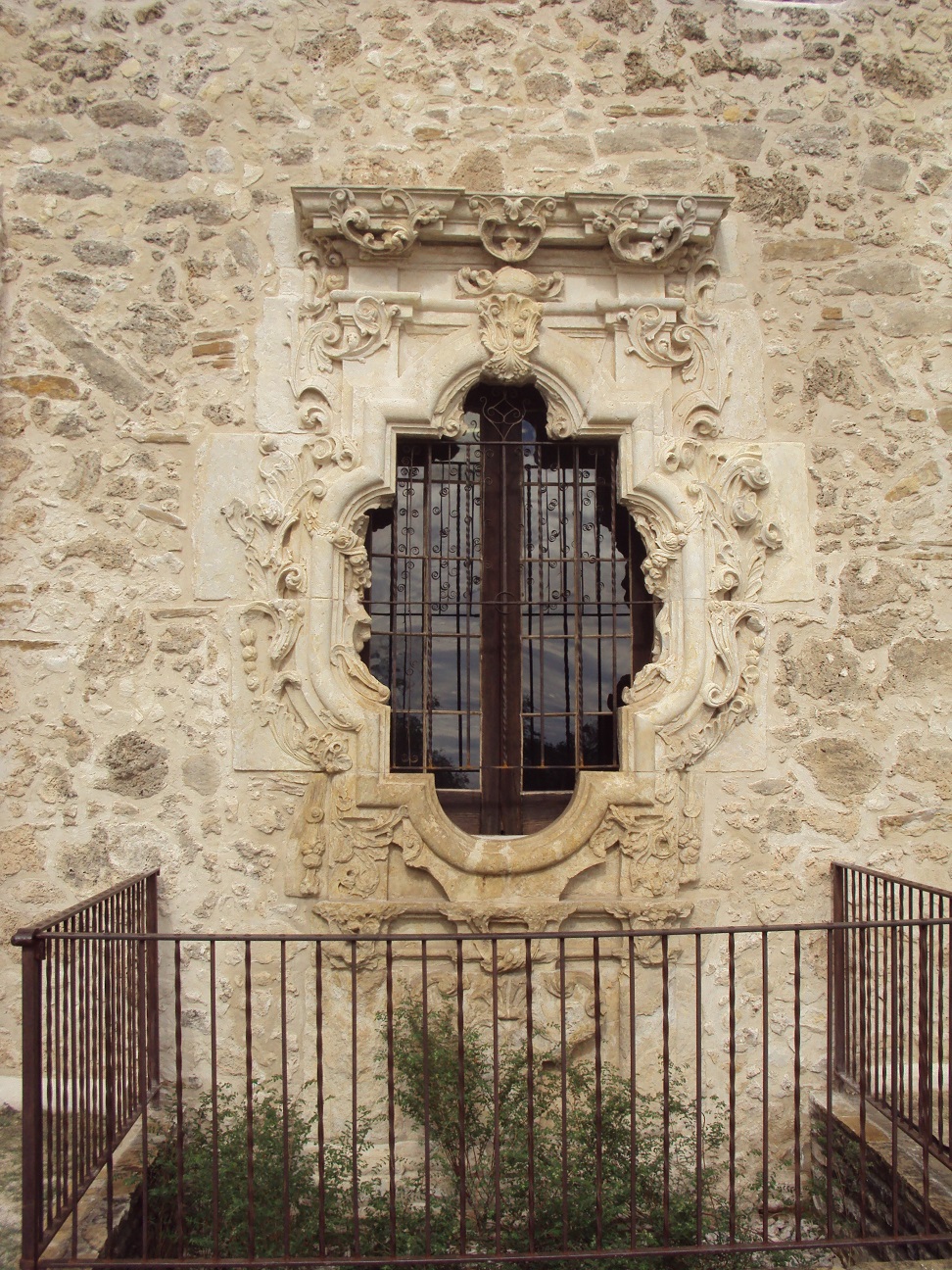
693.27 KB
The principal reason for San Jose's prominence among the San Antonio missions is the so-called rose window above and below. This masterpiece of stone carving has been restored somewhat but remains as a testimony to the artistry of its creators, now almost three hundred years ago here on the far frontier. "La Ventana de Rosa, the Rose Window, is located on the south wall of the church sacristy. The window has been described as the site where the Host was shown to gathered mission celebrants during the Feast of Pentecost. The window, sculpted ca. 1775, has been the object of both legend and admiration. It is considered one of the finest examples of baroque architecture in North America."
Image Insert:
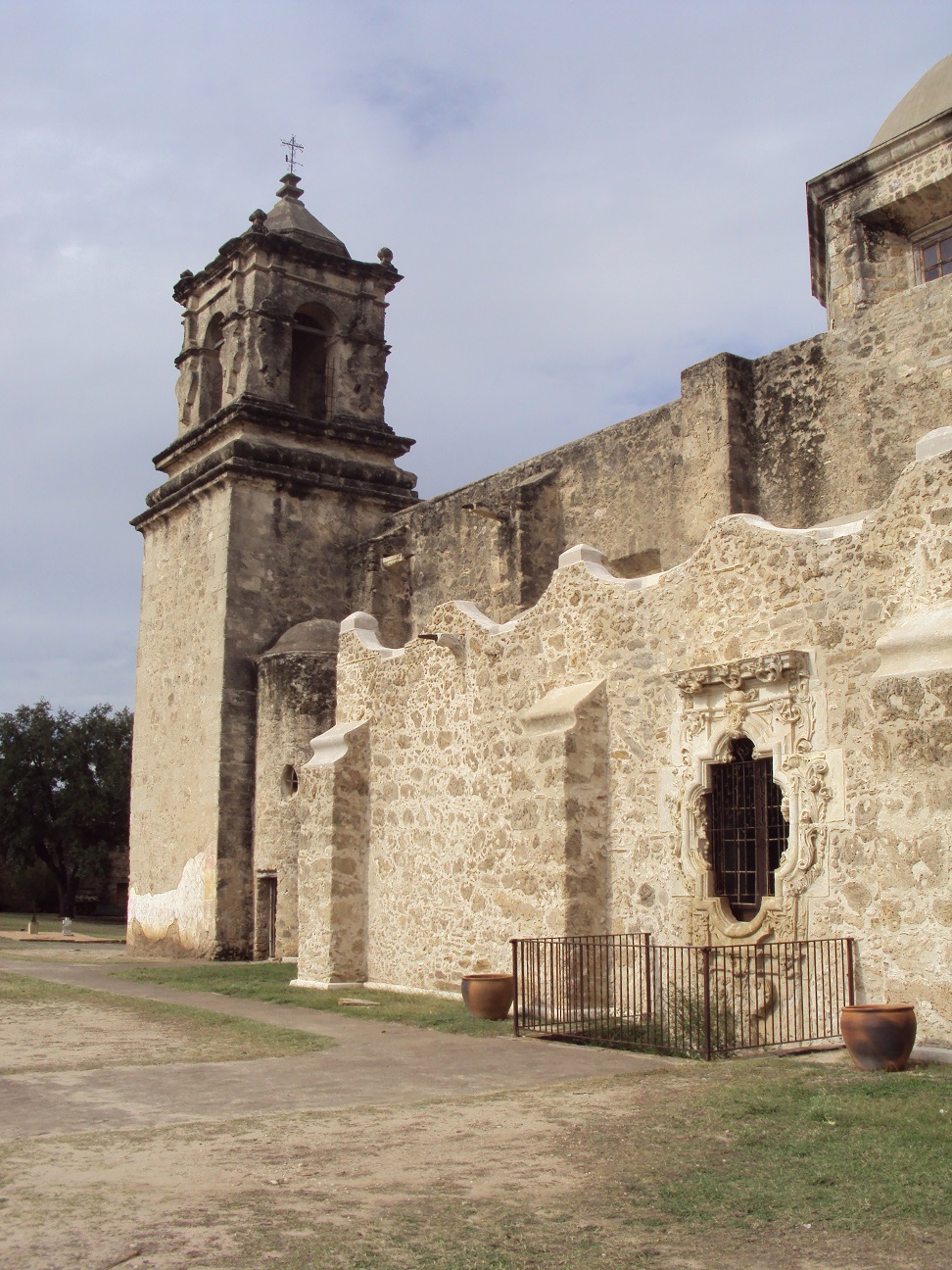
540.25 KB |
report to moderator  |
|
|
richfed
Sachem
    
     

USA

Bumppo's Patron since [at least]:
May 13 2002
Status: offline
Administrator |
 Posted - October 14 2018 : 2:18:38 PM Posted - October 14 2018 : 2:18:38 PM





|
quote:
I had aborted posting on this thread, not because I didn't WANT to, but because of my trouble with the mechanics of this site! Fortunately, they have been addressed to a great extent, making it again possible to navigate, thanks to Rich.
That's why they pay me the big bucks, James!  Thanks. I love your photos. Thanks. I love your photos. |
report to moderator  |
|
|
James N.
Colonial Militia
   

USA

Bumppo's Patron since [at least]:
October 24 2007
Status: offline
|
 Posted - October 15 2018 : 12:18:36 PM Posted - October 15 2018 : 12:18:36 PM




|
Image Insert:
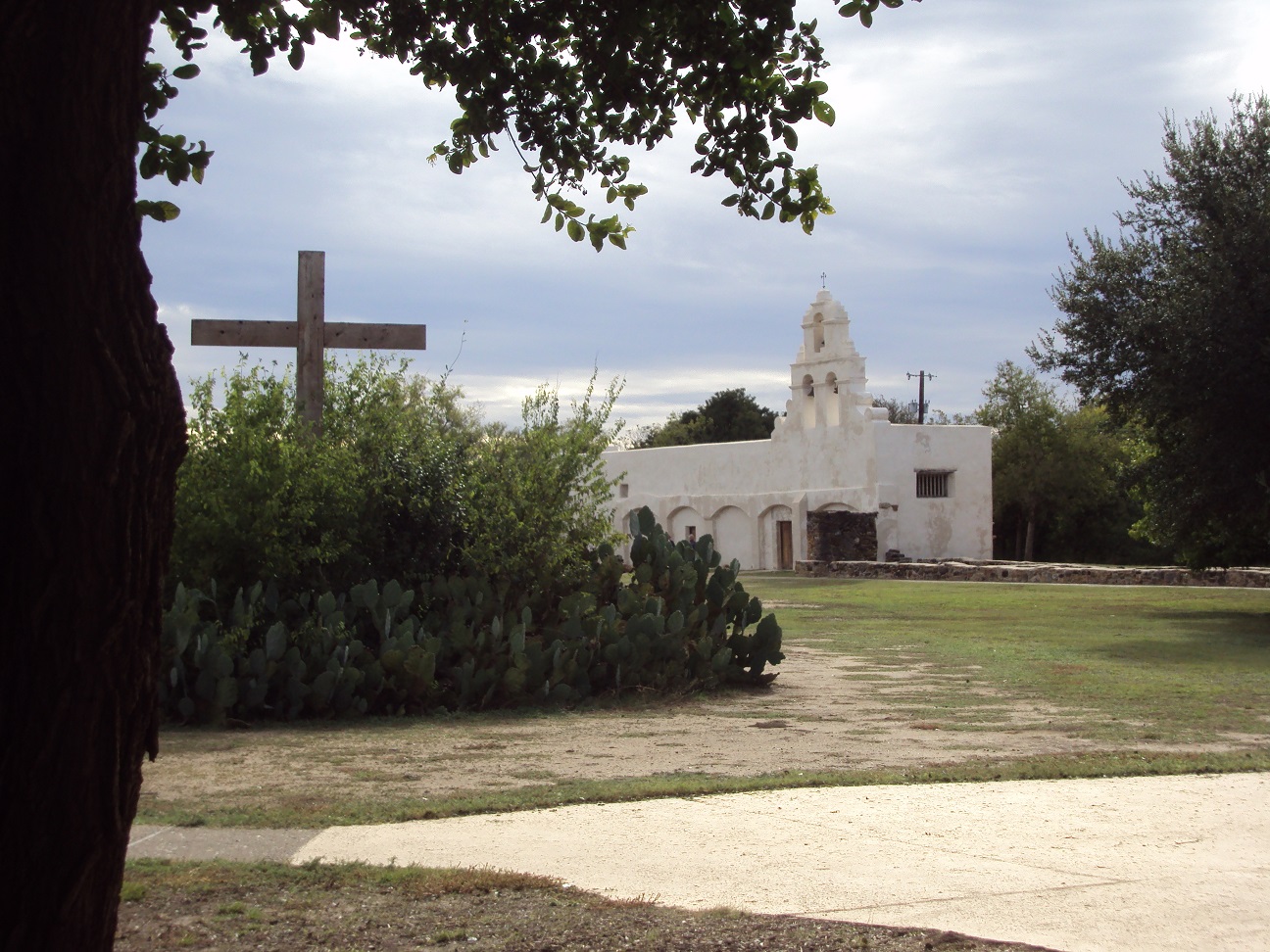
476.52 KB
Unlike missions Concepcion and San Jose, the remaining two are far less imposing, so will be combined into this single post, along with the Spanish aqueduct that served them. The farther south along the mission trail the more isolated in the countryside they become and the easier it is to imagine them in their original role.
Mission San Juan Capistrano
Image Insert:
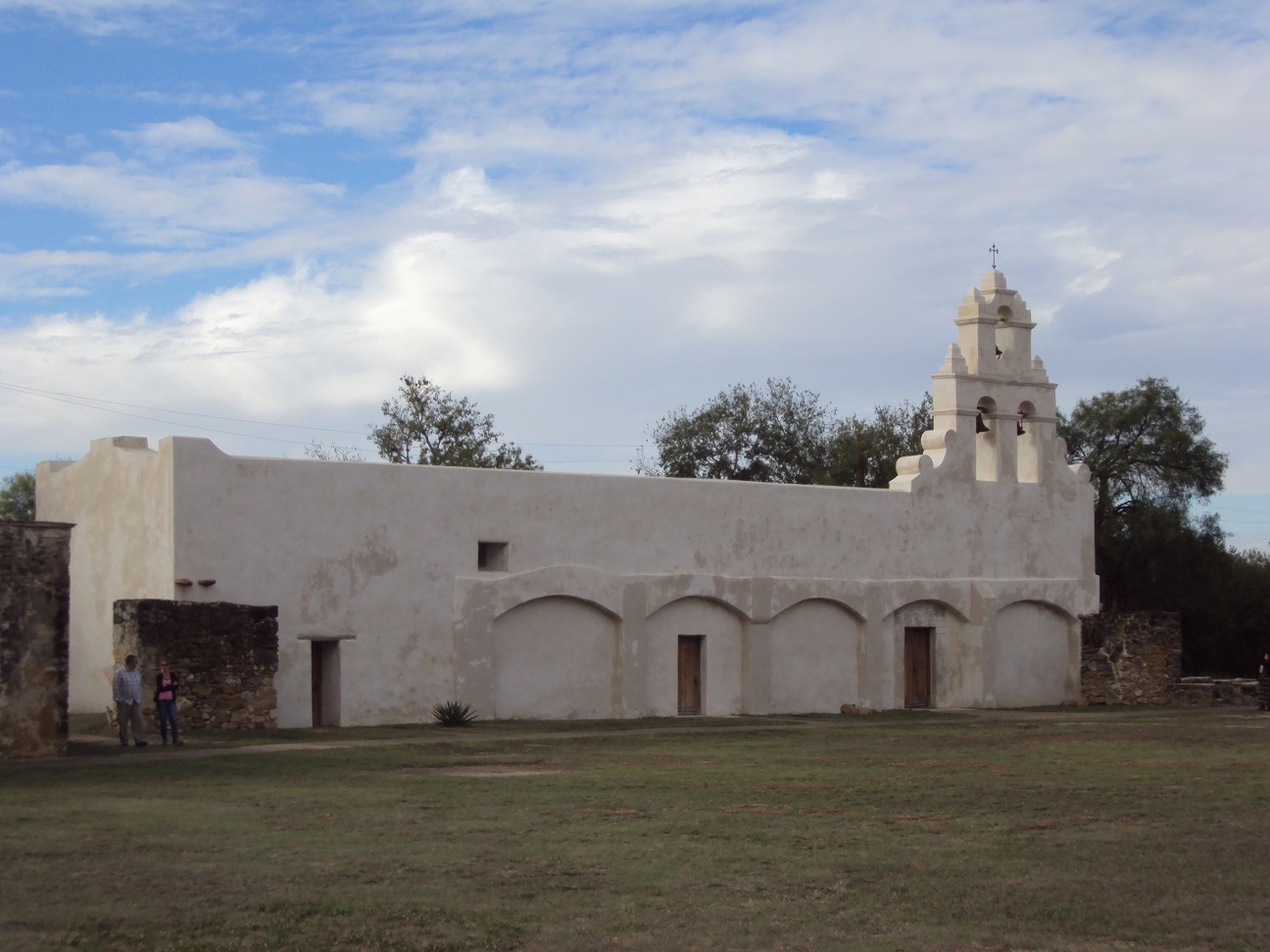
298.4 KB
Texas has its own Capistrano Mission, though nowhere near as famous as its California sister. It had its origins in a mission in what is now East Texas founded in 1716; however that proved a failure in its original location and was relocated here in 1731. The present church was erected beginning in 1772 but difficulties prevented its completion and the plan for an even larger church was abandoned in 1786. The church as it survives today was intended as a temporary one though it has been restored several times during its long history. According to a Spanish inspector writing in 1767, "... overseers or administrators are not needed ...The Indians themselves take care of work in the cloth factory, carpenter shop, forge... and attend to all of the work that is to be done... They are industrious and diligent and are skilled in all kinds of labor."
Image Insert:
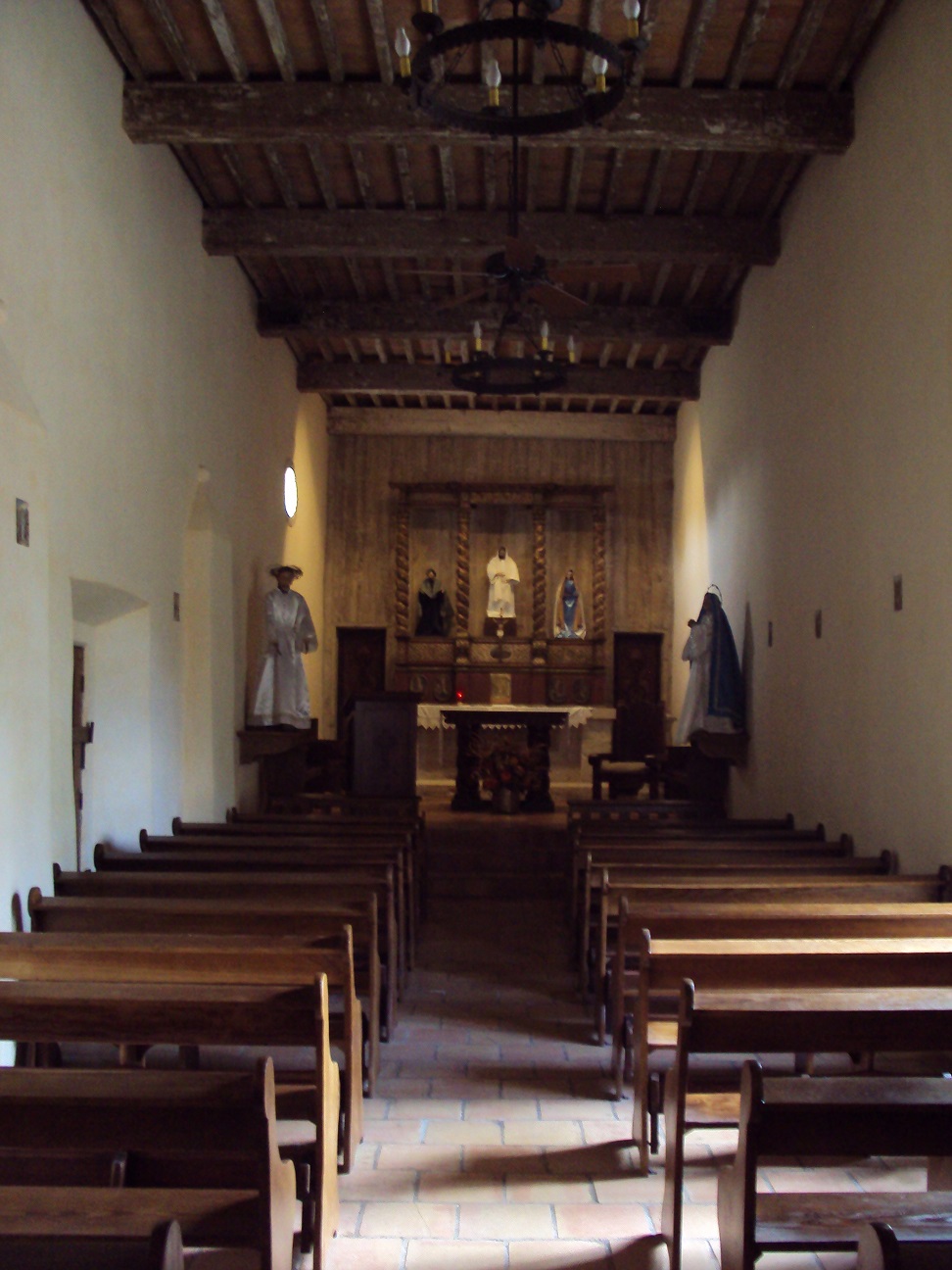
318.57 KB
The Acequila System
Image Insert:
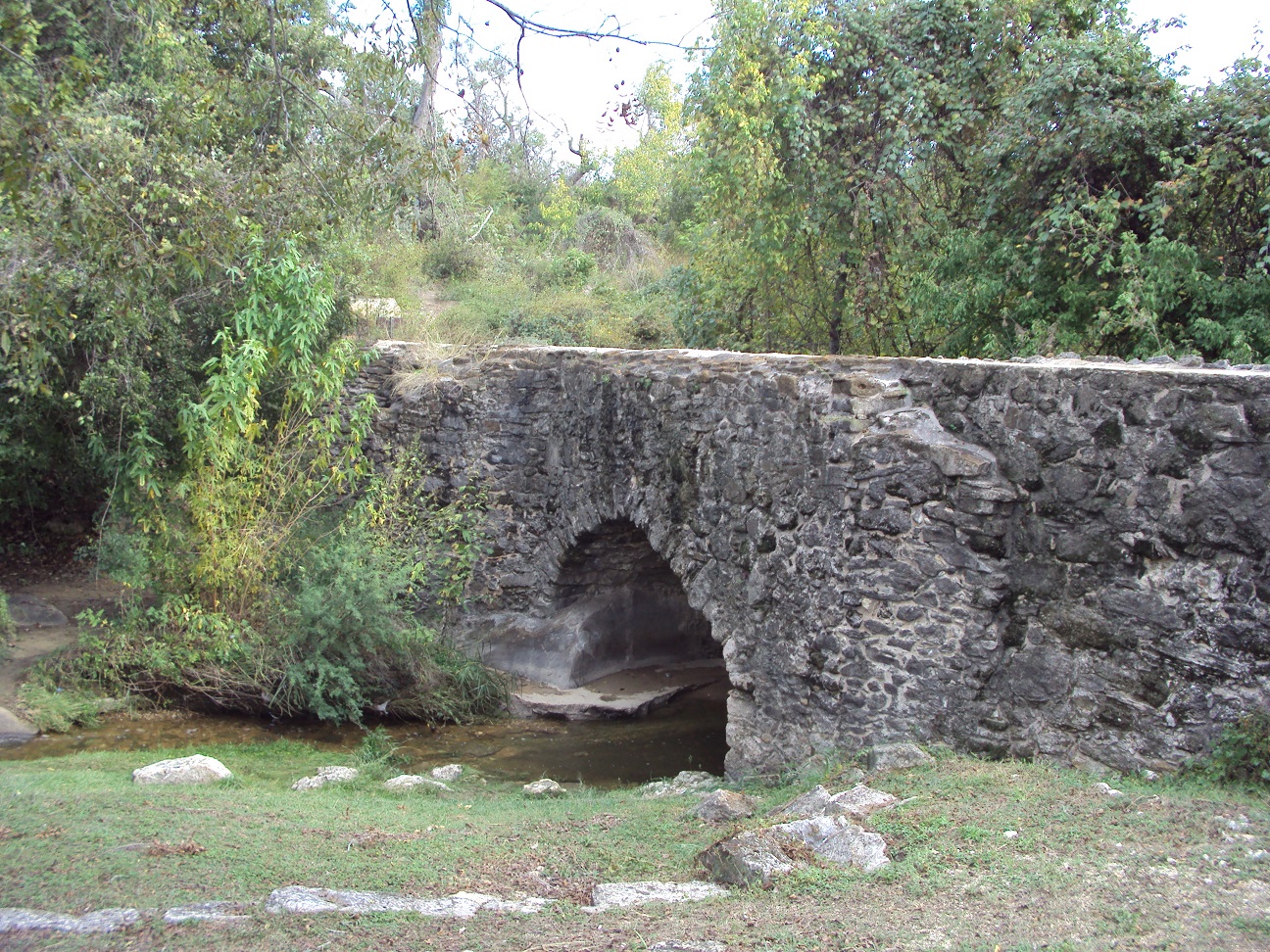
831.26 KB
The arches of the two hundred year-old Espada Aqueduct are a part of the best-preserved portion of the irrigation system which the missions depended on for the agriculture they relied on for survival, especially important during Texas' hot summer conditions and frequent droughts. Despite its name, the aqueduct is nearest to Mission Capistrano and was completed by 1745 and still diverts water into an acequia madre or "mother ditch." It is the oldest remaining Spanish aqueduct in the United States and still provides water for nearby farms.
Image Insert:

721.17 KB
Mission San Francisco de la Espada
Image Insert:
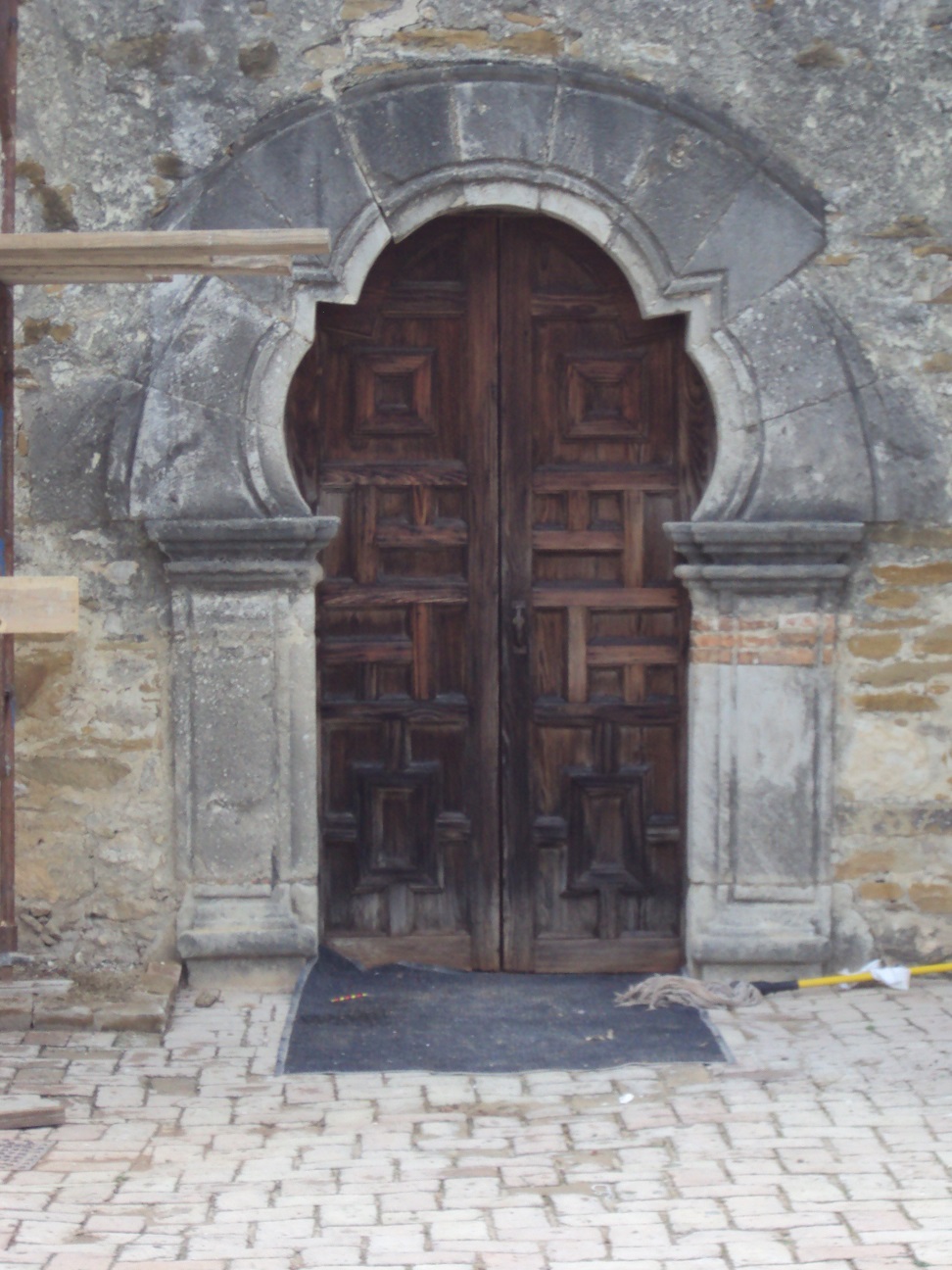
366.93 KB
Unfortunately, during my visit this farthest-flung of the San Antonio missions was in the process of restoration, beneficial for it, perhaps, but not for photography! Another East Texas mission, begun in 1690 and removed to this area in 1731, Mission San Francisco de la Espada (Saint Francis of the Sword) is now some two hundred and fifty years old, so likely deserves a little attention - although the grounds and ruins were open, the church itself was closed to the public severely limiting my photo opportunities to these few examples.
Image Insert:
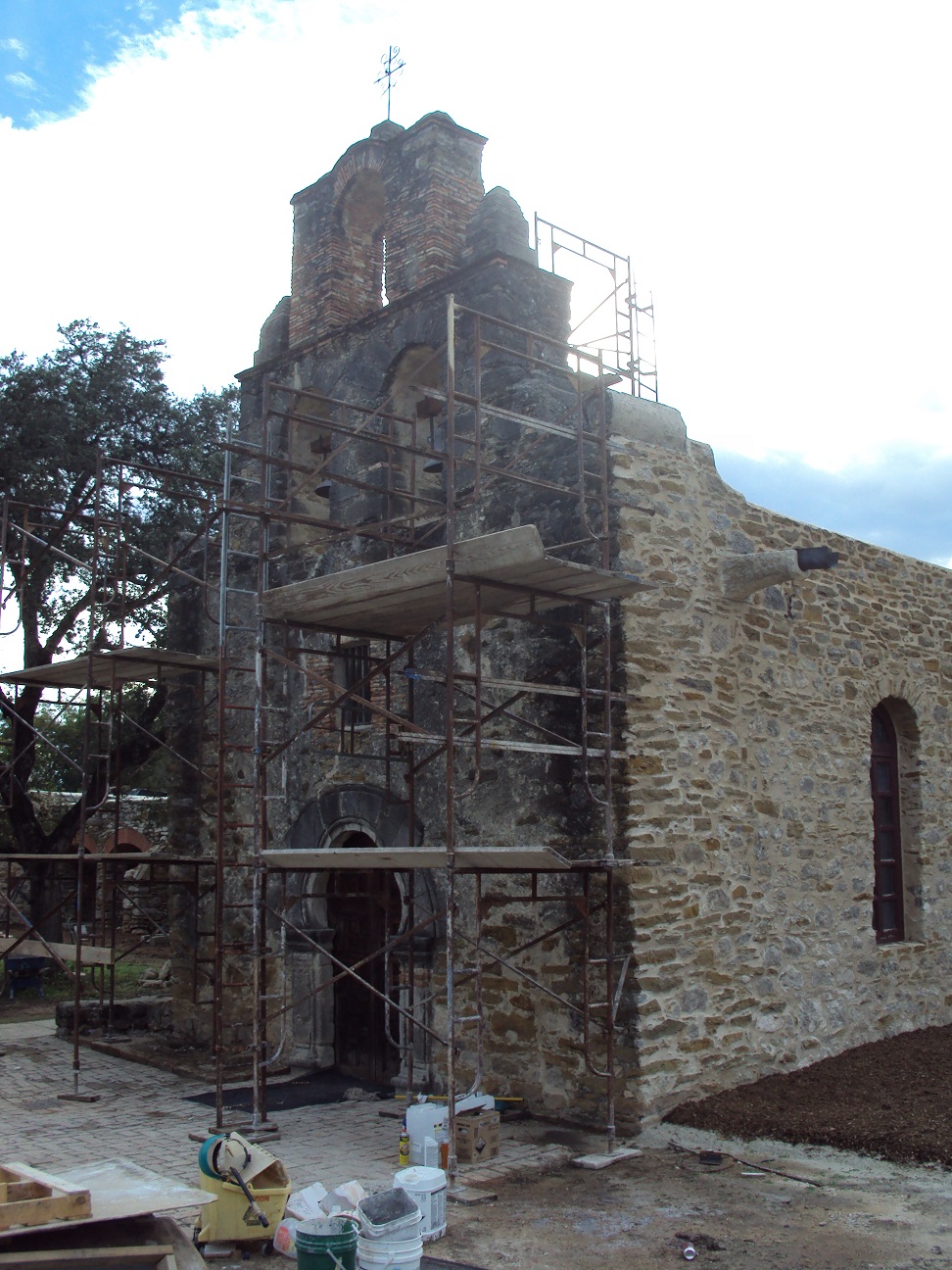
474.35 KB
"In 1764 the mission began the process of secularization or the transformation to a church-based community. However the mission was impoverished. Each of the remaining 15 families received land, but shared equipment and supplies. In 1826, a band of Comanches raided the fields and killed the livestock. The same year, a kitchen fire destroyed most of the buildings; the chapel survived. Yet, people continued to make their home here.
Today the church serves as the heart of this small community; mission descendants continue to worship here. Franciscans, clothed in their simple brown habits, work in the convent. A community assistance organization operates on the site. The mute and fragile walls of today's Mission Espada stand as a testament to the enduring impact of the people who built and nurtured it."
Image Insert:

211.36 KB |
report to moderator  |
|
| |
 Topic Topic  |
|
|
|
| The Mohican Board! [Bumppo's Redux!] |
© 1997-2025 - Mohican Press |
 |
|
| Current Mohicanland page raised in 0.21 seconds |
 |
|

![The Mohican Board! [Bumppo's Redux!] The Mohican Board! [Bumppo's Redux!]](images/wwwboard.gif)





























